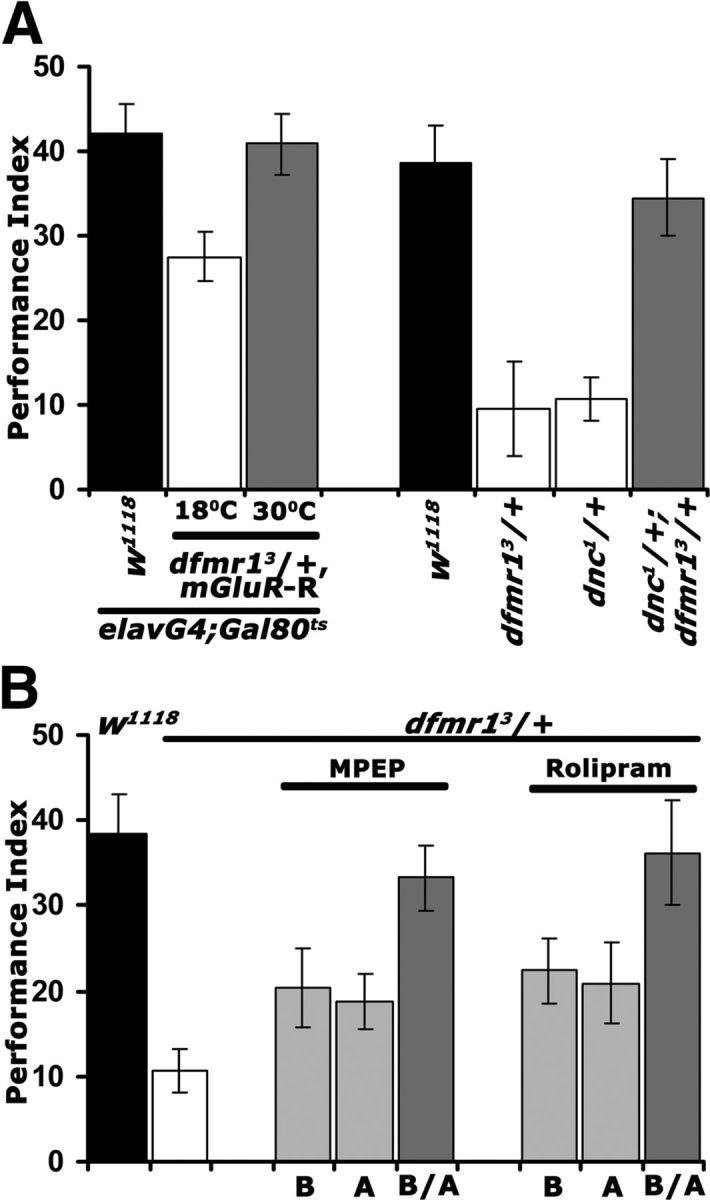Figure 6.

Rescue of the dfmr13/+ LTM deficit via DmGluRA inhibition and cAMP elevation. Mean PIs and their SEMs (PI ± SEM) are shown for all experiments. A, Conditional abrogation of DmGluRA reverses the LTM defect of dfmr13/+ animals (left side). Animals were heterozygous for all transgenes and Gal4 and Gal80ts as indicated. Repression of the abrogating transgene (18°C; open bar) revealed a significant (p < 0.0001) memory deficit compared with controls (black bar), whereas upon mGluR-R induction (30°C; gray bar) the performance was indistinguishable (p = 0.97) from that of controls. n ≥ 9. On the right side, the complementary genetic experiment confirms the conclusions. LTM of both dfmr13/+ and dnc1/+ single heterozygotes (open bars) were significantly different (p < 0.0001) than controls (black bar), whereas surprisingly that of dnc1/+; dfmr13/+ was not (p = 0.52). n ≥ 9. B, Similar temporal requirement for MPEP and Rolipram to rescue the LTM deficit of dfmr13/+. Pharmaceuticals were administered before (B), after training (A), or both prior and posttraining (B/A). Animals exposed to MPEP or Rolipram B/A (dark gray bars) did not perform different from controls (p = 0.78 and p = 0.99, respectively), whereas all other memory scores were significantly different (p < 0.0001) from those of controls.
